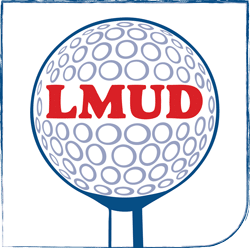The future of water is compared to gold, oil

As published in the Lake Travis View, December 2020.
 Water scarcity has become a hot topic worldwide. In response, this month, for the first time ever, water found its way onto Wall Street, to be traded like other commodities such as gold and oil. According to Market Insider, water is being sold as contracts that are tied to the Nasdaq Veles California Water Index, which was launched two years ago. The index is driven by the volume-weighted average of the transaction prices in California’s five largest and most actively traded water markets.
Water scarcity has become a hot topic worldwide. In response, this month, for the first time ever, water found its way onto Wall Street, to be traded like other commodities such as gold and oil. According to Market Insider, water is being sold as contracts that are tied to the Nasdaq Veles California Water Index, which was launched two years ago. The index is driven by the volume-weighted average of the transaction prices in California’s five largest and most actively traded water markets.
Why is this launch groundbreaking and what does it mean for the future of water? To us, it’s a step in the right direction for highlighting the value of water, but also the scarcity of it. Every day, we rely on it, but we take it for granted, a seemingly endless supply that flows from our taps. But this is not the case. We each must do more to conserve it and protect our natural resources.
As water professionals, we closely monitor long-range weather forecasts that we use to predict the impact it will have on our customers’ water usage so we can maintain adequate supply. Specifically, we’re interested in how it will impact our customers’ irrigation habits because for our region, outdoor use accounts for about 60 percent of all water usage. According to Bob Rose, chief Meteorologist for the Lower Colorado River Authority, summer 2020 was the sixth-hottest summer on record and the 20th-driest. Despite above normal precipitation in September, drought conditions continue to increase across the Hill Country. This is in large part due to the persistence of the phenomenon known as La Niña, or the cooling of South Pacific ocean water temperatures, which translates to warmer, drier atmospheric conditions for much of the South that peak through fall and winter seasons. A return to El Niño, or the warming of ocean temperatures, could increase the chances of wetter, cooler conditions for our area, but meteorologists at the National Weather Service predict the chance of this happening by next summer at only 20 percent.
We also monitor the trends of the Highland Lakes levels because Lake Travis is our sole source for raw water, which we capture, treat and distribute for use by our customer base. If you’ve been anywhere near Lake Travis lately, you would see that it’s well below full, about 22 feet below, which is about 68% full, or about 6 feet msl below the monthly average, with a 0.49 feet drop over the past 30-day period. Depending on the amount of precipitation we get over the coming months, that level could return to normal or continue to plummet.
There are many efforts underway to plan and prepare for a new reality where “usable” water is scarce. Causes for these shortages, which are being accounted for worldwide, include drought, water contamination, inadequate planning to meet demand, water waste and more. Locally, water management plans for the Highland Lakes include trigger levels that prevent the release of too much water being sent downstream for rice farmers and communities in the lower Colorado River basin. In 2012, Lakeway Municipal Utility District General Manager Earl Foster spearheaded the formation of the Highland Lakes Firm Water Customer Cooperative, an organization comprised of Cedar Park, Pflugerville, Burnet, Marble Falls, Leander, Lago Vista, Water District #17, West Travis County PUA, Hurst Creek MUD, and LMUD that continues to protect the needs of drinking water customers and prevent the Highland Lakes from being drained to dangerously low levels. Many water providers also are embracing the implementation of recycled water systems, using treated wastewater for irrigation purposes, conserving drinking water, and in our case, saving roughly 158 million gallons per year from being taken out of Lake Travis. LMUD was actually one of the first utilities in the state to implement a recycled water system starting with irrigation for the Yaupon Golf Course in 1975; we’ve continued to expand the system ever since.
As we’re all realizing, having lived through 2020, the old normal is not the new normal. We’re having to re-think our planning while living in a state of uncertainty. There’s no substitute for water and we all need it, so as it’s scarcity increases, you will hear more and more about what decision makers are doing to maintain it … and what you can do to conserve and protect it. If you’re interested in a short overview of what the water crisis could mean for each of us, go to YouTube and look up “Explained: World’s Water Crisis,” produced by Netflix and Vox Media Studios. The summary of the video is “the trick is recognizing how valuable water is before there isn’t enough of it.”
Written by Stephanie Threinen, public information liaison for the Lakeway Municipal Utility District (LMUD). Earl Foster is the general manager of LMUD.

 You are now being redirected to the WaterSmart page.
You are now being redirected to the WaterSmart page.